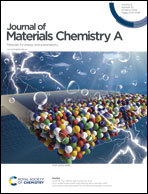High-efficiency oxygen reduction by late transition metal oxides to produce H2O2†
Abstract
Two-electron oxygen reduction reaction (2e− ORR) is a promising method for achieving sustainable H2O2 production. However, the presence of the four-electron oxygen reduction (4e− ORR) pathway poses a challenge in designing catalysts that are highly selective and cost-effective. Transition metal oxides have been identified as potential catalysts for 2e− ORR, but their application has primarily relied on heteroatom introduction or the synergistic interaction between carriers. The intrinsic activity of pure metal oxides for 2e− ORR remains largely unexplored. As typical post-transition metal oxides, ZnO, CuO, NiO and CoO have been widely studied and applied in the field of electrocatalysis as main bodies or carriers. These catalysts exhibited varying selectivity towards 2e− ORR, with approximate values of 90.0%, 82.8%, 79.4%, and 36.8%, respectively. Density functional calculations reveal that ZnO has the ΔG*OOH value closest to the ideal potential at the limiting potential. Moreover, as the atomic number increased, the catalyst's performance for H2O2 production through 2e− ORR improved significantly. This work provides new insights into the design and mechanism of transition metal-based materials for H2O2 production.



 Please wait while we load your content...
Please wait while we load your content...